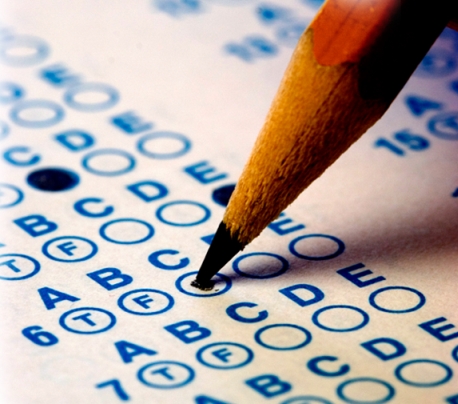
It’s standardized stressing, um, that is, “testing,” season in the US again. Scores will soon be crunched, the debate as to whether they belong in teacher evaluations will rage on, and powerful and connected people will quote the results, no matter what they are, in support of their agenda. But regardless of what the numbers say, will outcomes actually improve for the constituency that this annual exercise claims to be benefiting, that is, the students?
Of course not. Worse yet, for all the dollars and time and energy expended by all involved, US students are worse off by many measures. Whether you ask at the university level or at the K-12 level, teachers lament the declining level of competency that students gain during their school experience.
I Passed the AP Exam and All I Got Was This Worthless Score
In February, American Public Media reported that several universities will no longer give credit to students who passed AP exams. More and more, professors are finding that even these students, who are typically advanced among their high school peers, are arriving unprepared to handle the rigor and complexity of college courses.
“[T]he general problem of college readiness ‘raises questions about whether the courses students took in high school, that might have been labeled AP or dual enrollment, were really providing students the preparation in writing and research that college itself will emphasize.’ ”
— Carol Geary Schneider, president of the Association of American Colleges and Universities
If you haven’t read the highly-publicized resignation letter from New York public school teacher, Gerald Conti, you really should. That a single teacher’s grievance on the destruction of his profession went viral tells you just how widely and deeply this topic strikes a chord.
“The development of plans, choice of lessons and the materials to be employed are increasingly expected to be common to all teachers in a given subject. This approach not only strangles creativity, it smothers the development of critical thinking in our students and assumes a one-size-fits-all mentality more appropriate to the assembly line than to the classroom.”
— Gerald Conti, Westhill High School
Now comes word that some states are rolling out new tests to meet the Common Core State Standards before the higher-level skills they require can even be taught. Should we expect anything other than a continued decline in US public school education when we are continually met with the same stuff, different decade?
Let’s Start at the Very Beginning — A Very Good Place to Start
What would it take for real reform to happen? First of all, time. You can’t just take older students who have been raised on weak curricula, throw a test requiring critical thinking at them, and expect them to respond well on any level. Critical thinking skills take time and experience to build, and the damage done by years of teaching to the old test cannot be undone in short order. This is especially true when teachers have neither the flexibility nor the training to teach critical thinking properly.
For meaningful and lasting reform to come about, deep changes need to start in the primary grades where minds and attitudes toward learning are most malleable. In US public schools, there has been a tendency for the brightest teachers to accumulate in upper grades where more complex subjects, larger bodies of knowledge and greater numbers of students require stronger teaching skills. These positions tend to pay more as well. On the face of it, this makes sense if you assume that teaching the skills of critical thinking, complex problem solving and abstract reasoning to younger children is less valuable. This is where our mindset as a nation must shift radically because, not only is imparting these essential skills to young children arguably more valuable, it takes incredible teaching talent to do it well.
Learn to Think, then Think to Learn
Why is teaching these skills at a young age so important? Because of all the good that would follow from children starting with a strong foundation. As any secondary school teacher will tell you, when a student arrives in class with these skills in place, teaching more complex ideas and larger amounts of information to that student is a breeze. He or she has a sense of how to gather and assess information, dissect and formulate arguments, and articulate thoughts clearly and effectively. Furthermore, he or she usually wants to learn because past experience hasn’t been one of yearly frustration, grade level after grade level.
Students who first learn to think subsequently use those advanced thinking skills to learn with significantly improved outcomes for the student. They learn more, and they learn more deeply. They feel greater confidence and control. The in-born love of learning is nurtured, which, along with higher-level thinking skills, serves these students well in high school, college and beyond. If you can envision the positive ripple effects through society of teaching this way, then you will understand why having more talented teachers at primary grade levels would be one of the most effective components of undoing the damage of high-stakes testing.








